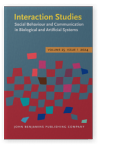Vol. 25:1 (2024) ► pp.70–99
Backchannels in the lab and in the wild
Backchannel choices affect conversational development. Some backchannels invite interlocutors to continue to the next part of what they are saying and others invite them to elaborate on what they have just said. We tested how communicative modality (audiovisual, audio, text), environmental setting (wholly in-lab, partially in the wild), and conversational goals (on-task, off-task) influenced backchannel usage by participants. We found that backchannel production depends on modality, setting, and goals. For example, we found that specific backchannels played a more prominent role in self-motivated dialogue. Knowledge of how backchannels are used has both theoretical and practical implications.
Article outline
- A collaborative approach to dialogue
- Two approaches to backchannels
- Generic and specific backchannels
- Horizontal and vertical backchannels
- Overlap between generic and horizontal backchannels
- Examples of how backchannels are used
- Factors affecting backchannel use
- Goals of the conversation
- Task familiarity
- Conversational modality
- Current studies
- The influence of conversation type on backchannel use
- The Roommates Corpus
- Method
- Results
- Discussion
- The IM Reciprocity Corpus
- Method
- Results
- Discussion
- The Artwalk Corpus
- Method
- Results
- Discussion
- The influence of modality and location on backchannel use
- Discussion
- General discussion
- Limitations
- Future directions
- Conclusion
- Acknowledgments
-
References
